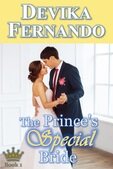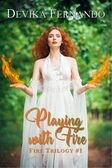
Guest Post by Natasja Hellenthal
This is some more information, symbolism and random thoughts about ‘Chained Freedom’, a thought-provoking fantasy. I’ve written the story some years ago whilst being stuck in a rather, suffocating relationship. I always had the choice to step out sooner than I did, but I didn’t feel ‘free’ enough, or ‘ready’ enough, or even ‘strong’ enough to do so but moreover full of guilt.
Instead, I wrote this story, as all my stories are based on my own life and experiences to some degree. I’m not Tana, mind you, but I feel like I know her really well!
But it’s not just relationships, of any kind, we can relate this story to, and apply it to our lives; it’s any kind of loss of freedom really. Freedom; everyone’s birthright, but so very fragile and easily swept away from us, whether we let it happen consciously, or more than often not. It could also be through religion, our upbringing, conditioning and social dogma’s that we get trapped without giving it a second thought.
When are we really free?
‘Chained Freedom’ is a short story featuring Fay Comyenti, first daughter of Sula and Felix from the first book in a Fantasy drama series, ‘Call Off The Search’ (Comyenti Series), and how she helps a woman break free from a magical entrapment.
Fay is not the main character, but an important side-character, who reminds the main character of Chained Freedom, Tana Woodwold, of her own inner strength.
Short synopsis:
Tana Woodwolf wakes to find herself trapped within a strange land. She learns quickly from the faces of the others that this is no paradise she has been transported to; it is a prison.
Unable to escape, Tana soon discovers that a dark and malignant force is dragging them, one-by-one, to unreachable higher rooms of the tower from which they never return.
If she is to ever escape from there then she will need to use all the guile and strength she has within her. Does one of the others hold the key? Or is it something else within the prison that she needs to study?
As the darkness comes nearer, a strange voice whispers, ‘Look and be free… You have to let go of what you know.’
Should she trust the voice? Should she trust the others? Does she even have a choice?
As despair and terror closes in around them all, only one person can discover the truth and save them...
Symbolism of Chained Freedom (spoiler alert!)
Tana, once free, is determined to also help free the other slaves. She won’t rest until she has found a way to do so. She cannot be completely free, until then she is still chained. Little does she know that the Wizard is the very embodiment of Evil and can never be defeated. It’s the balance of life, of light and dark, of right and wrong. It is more than that: as long as men continue to do evil, hurt other people, the Wizard will live. Only people with dark thoughts are being transported! That’s the first rule.
As for the other slaves, they are people like Tana, who cannot be broken free from the outside, but themselves will have to try to find a way from the inside.
Some people aren’t ready yet and live with a curtain (the magic wall), closed over their eyes. Others, like Tana, with a little help, can see an opening and find a way to lift the veil to let the light in again; a way to see the world in its true light and find goodness. Hope is the key that can open the heart which is the way. Compassion and love are the door(s).
Tower: Patriarchal dominance and world-leader ship. The prisoners end up there (close to the evil wizard) as a first warning and to actually been given a second choice. Not the real criminals are being put here, as they get a harder punishment, but people, like Tana, with minor crimes.
Prisoners: that’s what we all are unless we break through. Also a reference to ‘free range’ animals, or caged domesticated animals, who can’t escape at all. The prisoners know, like farmed animals, that they will end up dead and live in fear (both have been proven).
Wizard: Pure evil. But really it’s not about him, he is just a symbol. That’s why he has no face, no name, no voice and no real role in the story, because it’s about the slaves and their own inner wizard, their own evil inside of themselves. You can choose to do either good or bad. But you cannot be good to others if you’re not good to yourself first.
Disbelieve of their fate: What have they done wrong to deserve this? That’s a real life question of many people in ‘chained’ or difficult situations.
The Magic wall: the curtain or veil that is drawn over our eyes, making us forget our innocence and to be in touch with the real world around us.
Fay: the helper, someone who believes in Tana, for we all need someone to have faith in us; to do what seems the impossible.
Chains: invisible, but they’re still there. Also our responsibility to help others. We can never be truly free unless the whole world is. Until then we are still half-chained or with
one hand.
The message that Tana is trying to give to other people is: Be good, do good, be kind to one another. If you don’t, you’ll end up in the tower. Because she had found kindnees and a love in her own heart, hope and a lightness in her being, maybe by doing good, helping others, she found a way out and the wizard ‘let’ her escape, because she was changed and no longer evil.
I believe that with the right mind-set and help people indeed can change.
This story to me is the ultimate story of good and evil, right and wrong and how we can all fight our own evil in ourselves and help others. Surely by helping others you reduce the evil in your heart. The opening in the wall in the end was bigger and felt easier for Tana to find.
Quotes:
“You’re only chained if you allow yourself to be chained. Your soul cannot be put in shackles and will always be free.”
“If you cannot change a situation why not improve the quality of life around you?”
“You see, you’re only chained if you allow yourself to be chained. Your soul, the real you, cannot be put in shackles and will always be free.”
“You can’t possibly make holes in the wall for everyone. I don’t think it works that way,’ Fay said. ‘You’ve seen it with your own eyes. They have to, like you did, create their own doorway.’
‘So, I’ll show them how. I can teach them how to escape, I’m sure I can.’
I had a feeling she didn’t agree with me.
‘I’m not saying you can’t, but how does the old saying go; prevention is better than a cure?”
“The other prisoners and I had one thing in common: our enslavement, chains or not, and there surely would be more people after my leaving, perhaps I had been replaced already.
Am I free?
Even though I could have easily walked away and forgotten all about the mysterious evil wizard and his slaves, I just couldn’t. Until then, my freedom was still in chains.”
End Note:
After nearly ten years of being thrown backwards and forwards, of living in doubt and insecurities, of a life half lived in freedom, half in chains, I managed to free myself from my own forged shackles. But, complete freedom is of course a big word. I will always have my responsibilities as we do, some I created, but since then I’m much stronger and aware and am no longer shackled. The chains I wear these days or made of invisible soft silver cords.
I’m even more conscious of the meaning of freedom and what we are all doing with it once we have it, or what we do to get it back when we don’t.
Every day in freedom is a gift. Many don’t have it and are still fighting that struggle, some have lost their lives.
We are all bound to each other through invisible, silver lines as I call them. They are not just those attached to our family and friends, but to everyone. I believe we owe it to others who are less fortunate and need our help, even if we don’t know them.
We cannot help everyone, but everyone can help someone.
‘Chained Freedom’ is available here:
http://www.amazon.com/dp/B00IK4OWXE
Listen to the book here: http://www.booktrack.com/read/d9408688c713442e8476cf3a46693f5a















 RSS Feed
RSS Feed